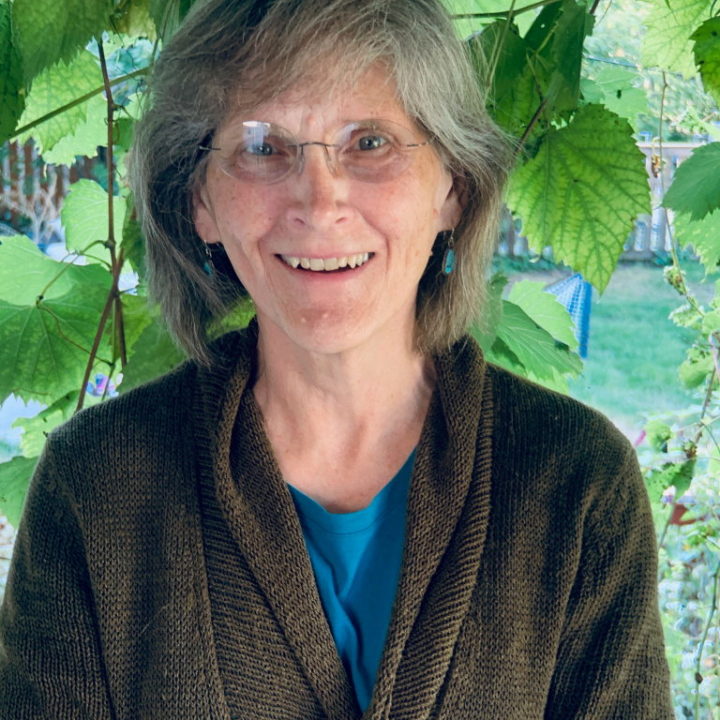I. In which plants and insects from far away contribute to my home office
 Pines in Karelia
Pines in Karelia
“What you doin’?” asked the three-year-old who lives next door. I was standing on my front porch wielding a paintbrush.
“Finishing my shelves.” I showed him my brush.
“But I don’t smell anything,” his mother said as they went by.
“Hah!” I thought, exactly the point.
A stint of house/cat/garden minding had brought in a little extra cash, and I decided to use the proceeds to finally set up my home office. No longer for me a life of migrating in search of a place to work within my own house!
Mostly this involved commandeering what had been my son’s room but now functioned as a sort of storage and staging area for my daughter. Heartlessly, I removed her belongings and arranged an old desk, chair and my laptop. What should I purchase? Bookshelves, of course. I decided on some rules: inexpensive, sustainable, and easy to assemble/disassemble. The last because, after having lived in this house nearly half my life, rooted as an oak tree, I may need to decamp on short notice. You never know.
Like so many others, I ended up at IKEA and brought home some unfinished shelves and side units made of pine. The tag said “made in Russia,” which a little research revealed most likely meant the trees had grown and shelves had been manufactured in Karelia on the Russo-Finnish border.
 Tea plantOnce home with what, when assembled, would be eight linear feet of six-foot high shelving, I had to decide what finish to apply. New white pine glares in an old, somewhat scruffy house. What to use? More rules: non-toxic as possible and no known petroleum ingredients. Not having a ready supply of black walnut hulls, I thought of tea, and set off on a journey across the Internet, stopping at woodworkers’ forums in the UK and North Carolina, a forum devoted to the refinishing of Fender Stratocaster guitars, a tea drinking site, and a woodworking blog by a tea-emporium owner. En route I discovered that belly dancers dye certain parts of their costumes with tea and that you really don’t want to try duplicating Arts and Crafts fumed oak at home (too much ammonia in an enclosed area).
Tea plantOnce home with what, when assembled, would be eight linear feet of six-foot high shelving, I had to decide what finish to apply. New white pine glares in an old, somewhat scruffy house. What to use? More rules: non-toxic as possible and no known petroleum ingredients. Not having a ready supply of black walnut hulls, I thought of tea, and set off on a journey across the Internet, stopping at woodworkers’ forums in the UK and North Carolina, a forum devoted to the refinishing of Fender Stratocaster guitars, a tea drinking site, and a woodworking blog by a tea-emporium owner. En route I discovered that belly dancers dye certain parts of their costumes with tea and that you really don’t want to try duplicating Arts and Crafts fumed oak at home (too much ammonia in an enclosed area).
So that’s how I ended up on the porch, painting my shelves with very, very strong orange pekoe tea, Camellia sinensis, a plant native to China but probably grown in India, Sri Lanka or Ceylon. I brushed on four coats and then a final coat which had been darkened by a small amount of vinegar in which steel wool had been soaked overnight. Using this last straight will turn plain oak or tea-stained pine deep, deep gray or even black. I discovered that a small amount mixed in tea gives just a little depth to the gentle tan color.
 Carnauba PalmThen came three coats of furniture paste wax, in itself an interesting material. I happened to have some of the traditional stuff around the house, made of carnauba wax, beeswax, natural oils, and natural turpentine. Carnauba wax comes from the leaves of the Brazilian palm Copernicia prunifera; it hardens the beeswax, whose yellow color comes from pollen and propolis. The turpentine comes from the resin of pine trees, sometimes as a by-product of making wood pulp.
Carnauba PalmThen came three coats of furniture paste wax, in itself an interesting material. I happened to have some of the traditional stuff around the house, made of carnauba wax, beeswax, natural oils, and natural turpentine. Carnauba wax comes from the leaves of the Brazilian palm Copernicia prunifera; it hardens the beeswax, whose yellow color comes from pollen and propolis. The turpentine comes from the resin of pine trees, sometimes as a by-product of making wood pulp.
The whole process took more hours, over several days, than I care to admit, but they were pleasant ones, out there on the front porch. The weather was good and I got to visit with the neighbors. All in all, the materials were reasonably sustainable, though not locally sourced. You can’t have everything, I suppose. There were no bad smells, I cleaned up with soap and water, and the teabags and cotton rag used to apply the wax went in the compost pile. I’m sitting here now, looking at those shelves filled with my beloved books. They seem just right.
II. In which I make my first-ever jam from mostly my own berries
 RaspberriesI’ve always grown raspberries (Rubus spp.), and we’ve eaten them up with no thought for the future. This year I happened to read Independence Days by Sharon Astyk, which is all about food storage and preservation. I’ve also gotten interested in food plants native to the U.S., and this year would be my first chokeberry (Aronia melanocarpa var. elata) harvest. This would be the summer to make jam. Part of the raspberry harvest went in the freezer, along with some blueberries (Vaccinium spp.) my husband brought home from the farmers’ market. Then I barely got the chokeberries before the birds, and in the freezer they went. Was I cheating by freezing the berries before making jam?
RaspberriesI’ve always grown raspberries (Rubus spp.), and we’ve eaten them up with no thought for the future. This year I happened to read Independence Days by Sharon Astyk, which is all about food storage and preservation. I’ve also gotten interested in food plants native to the U.S., and this year would be my first chokeberry (Aronia melanocarpa var. elata) harvest. This would be the summer to make jam. Part of the raspberry harvest went in the freezer, along with some blueberries (Vaccinium spp.) my husband brought home from the farmers’ market. Then I barely got the chokeberries before the birds, and in the freezer they went. Was I cheating by freezing the berries before making jam?
 BlueberriesGood thing I froze them: canning jars and equipment took a couple of weeks to find, as did the citrus pectin that lets you make jam sweetened with a little honey instead of using a cup of sugar to each cup of fruit. However, all was finally assembled one recent Sunday afternoon, so after procrastinating awhile by rereading a history of canning–did you know the process was invented to help keep Napoleon’s army fed?–I put on some music and started in to jamming.
BlueberriesGood thing I froze them: canning jars and equipment took a couple of weeks to find, as did the citrus pectin that lets you make jam sweetened with a little honey instead of using a cup of sugar to each cup of fruit. However, all was finally assembled one recent Sunday afternoon, so after procrastinating awhile by rereading a history of canning–did you know the process was invented to help keep Napoleon’s army fed?–I put on some music and started in to jamming.
 ChokeberriesAn hour and a half full of mashing fruit, boiling water, steam, tipped jars, a slight burn, some language (“everything ok in there?” the living room contingent asked), and hopefully not-permanent stains on the counters resulted in five well-sealed 8-oz. jars full of deep, deep purple jam. I felt as though I had accomplished something worthwhile. Was it a one-time experiment?
ChokeberriesAn hour and a half full of mashing fruit, boiling water, steam, tipped jars, a slight burn, some language (“everything ok in there?” the living room contingent asked), and hopefully not-permanent stains on the counters resulted in five well-sealed 8-oz. jars full of deep, deep purple jam. I felt as though I had accomplished something worthwhile. Was it a one-time experiment?
The next day, as she snacked on whole-wheat banana bread spread with that jam, my daughter said, “Oh Mom, this is good.” Guess I’ll be making more. Maybe apple butter, when my CSA grower Dan brings in the Cortlands I’ve ordered.






